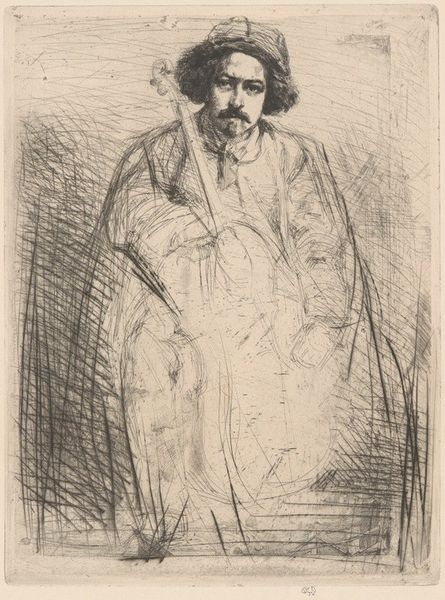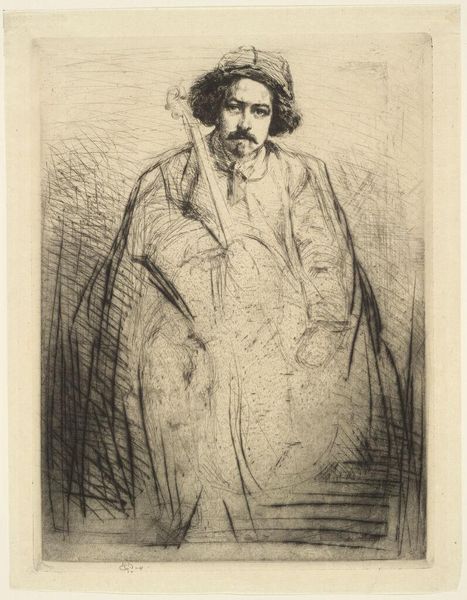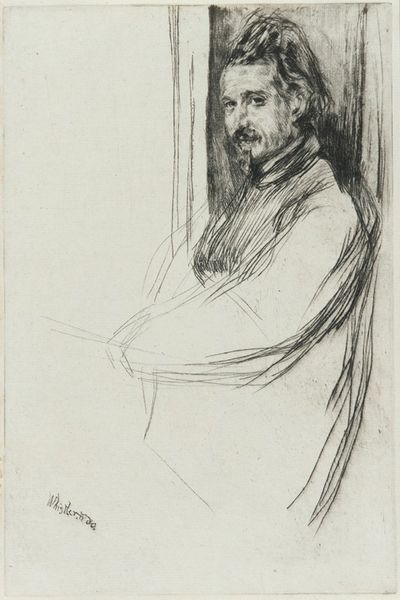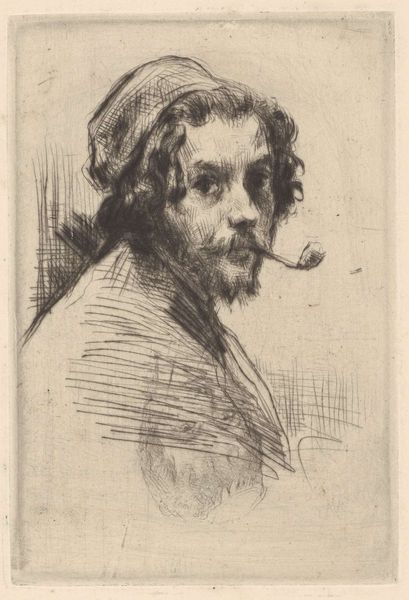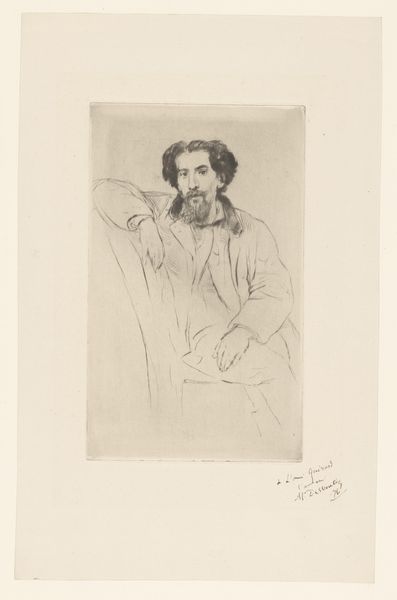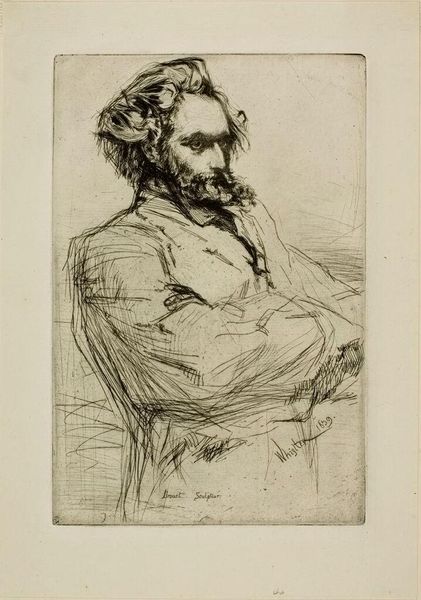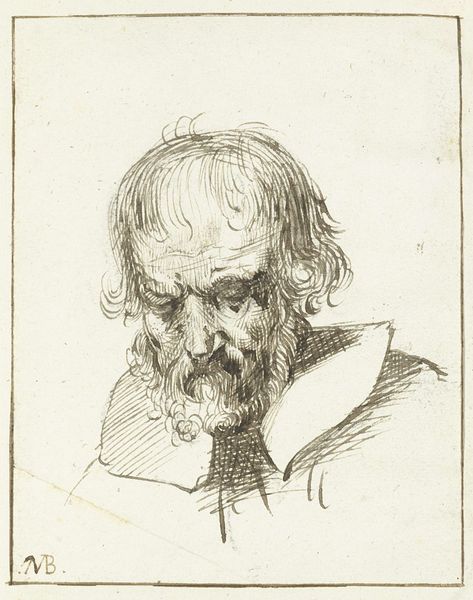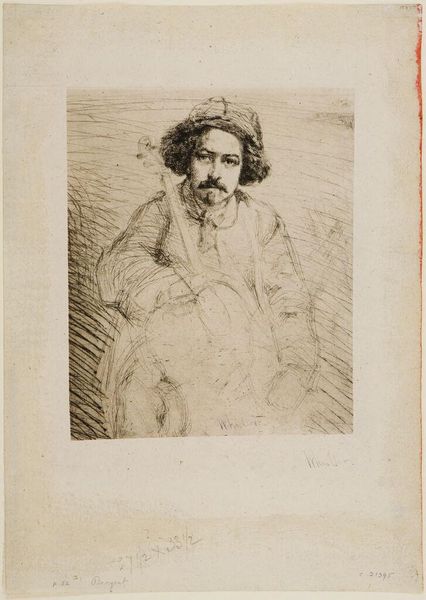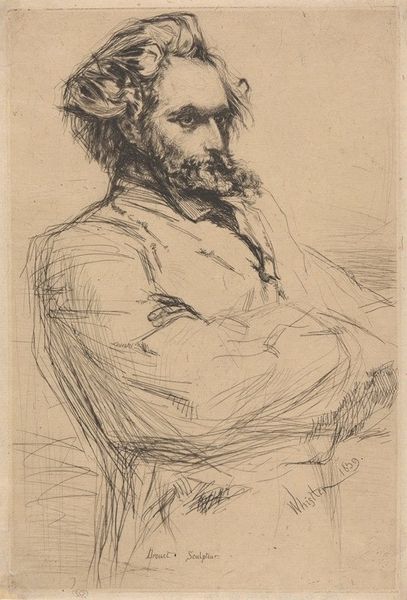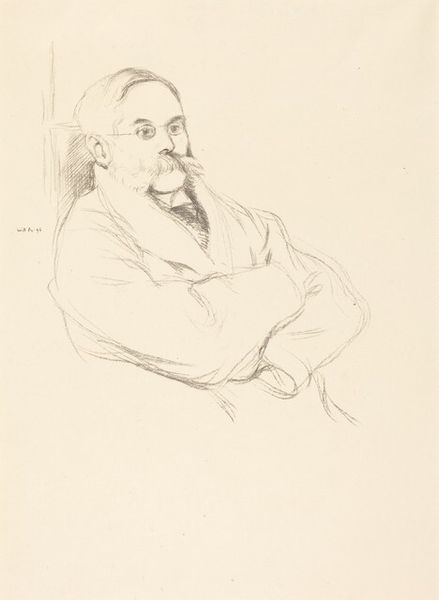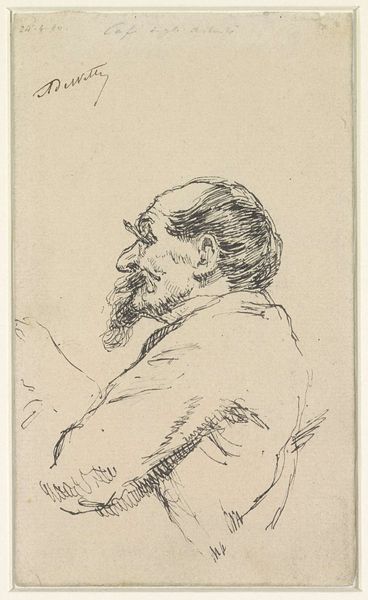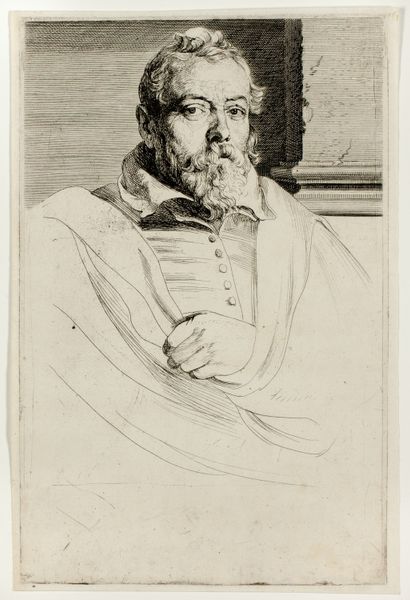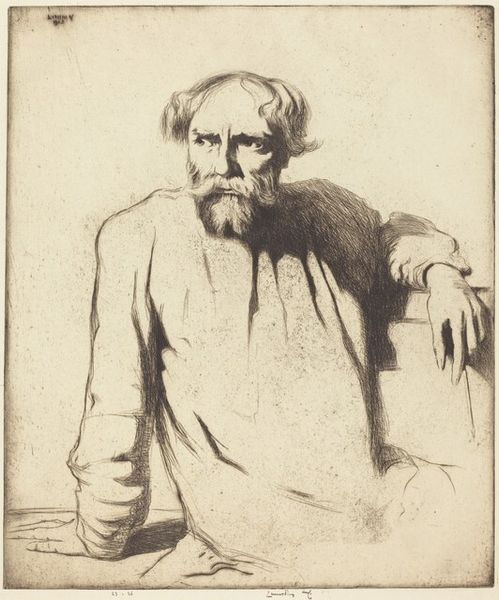
Dimensions: sheet: 27.9 x 21.6 cm (11 x 8 1/2 in.) plate: 25.5 x 19.1 cm (10 1/16 x 7 1/2 in.)
Copyright: CC0 1.0
Curator: Whistler's etching, "J. Becquet, Sculptor," presents us with a portrait of an artist and his instrument—or perhaps his muse. There's a sketch-like quality to it. Editor: I'm immediately struck by the intimacy, despite the sitter's formal pose. The lines feel very raw, as if we're catching a glimpse of Becquet in a private moment. Curator: The work exists within a larger context of 19th-century artists representing their peers. How do we interpret this depiction of artistic labor and identity? Does Whistler, in his choices, comment on the role of the sculptor in society? Editor: I think we must consider the performative aspect of artistic representation. Whistler wasn't just documenting Becquet; he was constructing an image of the artist as a thoughtful and creative individual. Curator: Absolutely, and thinking about the relationship between the artist and his subject helps us question the artistic intentions of the piece. Editor: Examining art through this lens reveals the power dynamics inherent in representation. Curator: Indeed, it broadens our understanding of the artwork's social dimensions. Editor: It's made me see how intertwined art, identity, and social context truly are. Curator: Yes, viewing the work in this manner adds depth to an otherwise formal representation.
Comments
No comments
Be the first to comment and join the conversation on the ultimate creative platform.
